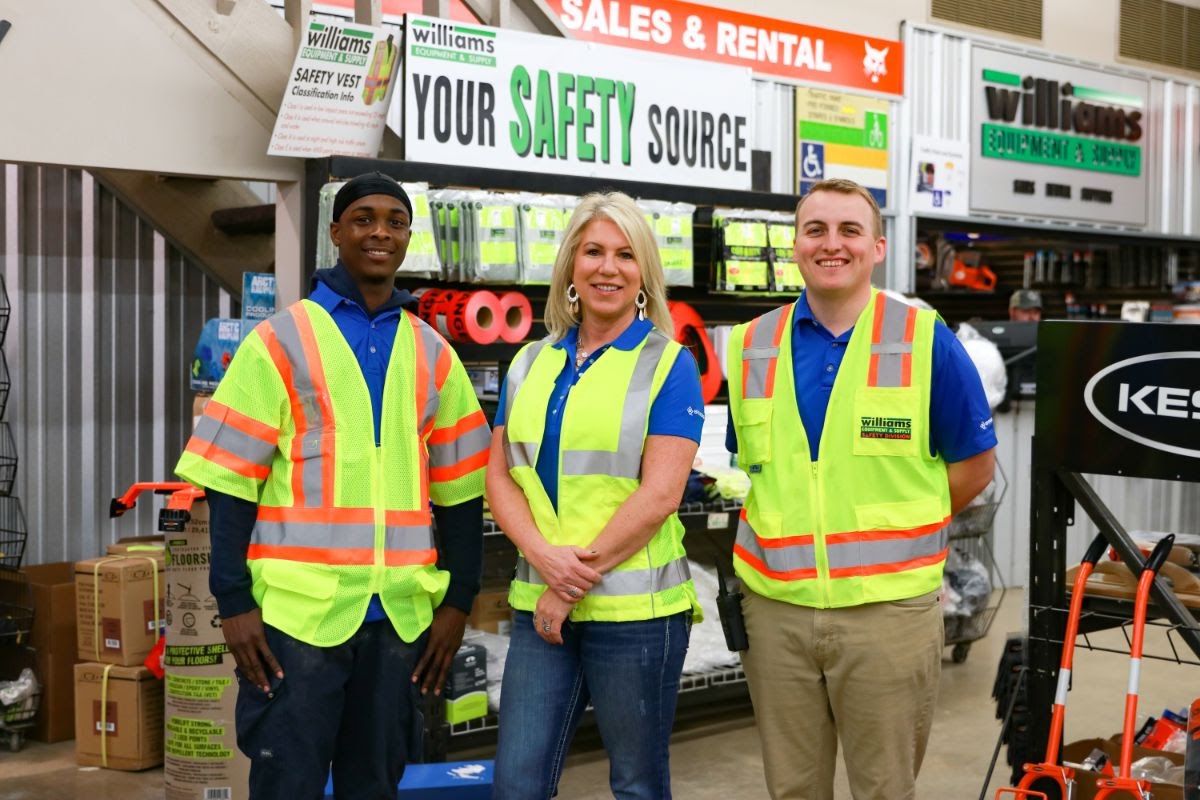Falling tools and objects on work sites cause a significant number of injuries and deaths. That’s why the American National Standards Institute and International Safety Equipment Association (ANSI/ISEA) have recently released new guidelines and standards to try to limit these easily avoided injuries. However, staying up-to-date on changes like this can be a challenge if you’re in the middle of a project or have incorporated past guidelines into your process. We’re here to help! The team at Williams Equipment & Supply can help you adhere to the new dropped object standards and properly tether your tools.
What Counts as a Dropped Object?
Here’s how a “dropped object” is defined:
- An object that falls from a height by its own weight and gravity, or
- An object that falls from a height due to contact with an energy source.
It’s important to remember that even small objects can cause significant harm. According to the Dropped Object Prevention Scheme (DROPS), and object that weighs less than three pounds can be fatal if it’s from a height of 30 feet.
DROPS uses the following classifications for the consequences of a dropped object:
Light: A First Aid Case. No injury, or the injury is limited. First aid may be the only treatment needed.
Minor: A Recordable Incident. A work-related injury that does not involve death, day(s) away from work, restricted work or job transfer, and where the employee receives medical treatment beyond first aid.
Major: A Lost Time Incident (LTI). This is a nonfatal traumatic injury that causes any loss of time from work beyond the day or shift it occurred. A major incident is also referred to as Day Away From Work Case (DAFWC).
Fatality: Death resulting from an injury or trauma.
* Information taken from the Dropped Object Prevention Scheme
What Are the New ANSI/ISEA Dropped Object Standards?
The requirements of this standard will create formal distinction of a proper tethering system compared to duct tape and string and other inferior solutions. ANSI/ISEA 121 is to dropped object prevention equipment what ANSI Z359 is to fall protection equipment.
The ANSI/ISEA requirement is that the weight of the rated tool attachment is greater than or equal that of the tool. Additionally, the tether weight limit and anchor weight limit must be equal to or greater than the weight allowance of the tool attachment.
Regarding tethering, tool attachments and anchor point have a maximum lanyard length based on the length of the lanyard test. Tethers additionally have a maximum length. This means that on top of the tool length, you need to make sure that the tool attachment and anchor points have a maximum tether length that is less than or equal to the tether being used.
How to Properly Tether Your Tools
Tethering simply refers to the process of securing a tool or piece of equipment to an anchor point using a retention device that has been approved. Tools under 5 lbs. can be tethered to a worker or structure using a variety of lanyards. Lightweight tools can be secured to your wrist with a lanyard intended for that purpose.
Coil lanyards and retractable lanyards keep any extra tether length contained, so it’s less likely for the device to snap and tangle, causing additional hazards. Traditional Lanyards are the most common option and can be used to tether small tools to a worker, or large tools and equipment (up to 80 lbs.) to a secure structural anchor point. Traditional Lanyards use a predetermined length to secure tools and equipment.
Tools that weigh more than 5 pounds should never be attached to a worker. The force of a dropped tool can dislocate a wrist or shoulder, or throw the worker off balance and cause them to fall. Energy-absorbing lanyards can reduce the dynamic force put on a person or other anchor resulting from a drop.
What You Should Do to Ensure Safety
Just like any preventative measure, putting together a dropped objects prevention solution takes a little planning. Here are some things to think about when you’re selecting attachment points, tethers or containers.
- The location or type of tool attachment should not interfere with the use of the tool. If the attachment needs to be attached to the handle of the tool, make sure the tool can still be used normally. The attachment point should not increase the potential risk of dropping the tool.
- Select your anchor attachment points based on preference. Attachment points can be structure, waist, or wrist.
- Always use the shortest tool tether possible. It may seem convenient to get a handful off tethers that are all the same size, but keeping tether short reduces the chance that they’ll get tangled or stuck in moving or rotating equipment. Bungie or retractable Tool Tethers keep material tight to the body and do not sag when the tool is in use.
- Know and adhere to tool tether weight limits as described by the Standard for Dropped Objects Understanding ANSI/ISEA 121-2018.
- Try to limit to tool weight to six pounds per tool tether when you’re connecting it to your body. The heavier the tool, the greater the chance that the worker will be thrown off balance if the tool is dropped. Consider the potential effects on a worker’s balance if a six pound grinder were dropped at arm’s length and was attached to the worker’s wrist versus their waist.
- Make sure to inspect all dropped objects solutions before each use, and replace them as soon as you recognize an issue.
Williams is Helping You Stay Safe
Williams Equipment & Supply strives to be a partner to our customers. We’re passionate about providing contractors the most innovative, hard-working products on the market, and this is especially a priority when it comes to safety products. We work closely with our suppliers to ensure that we have the products and information necessary to help our customers choose the best safety equipment for their jobsite.

